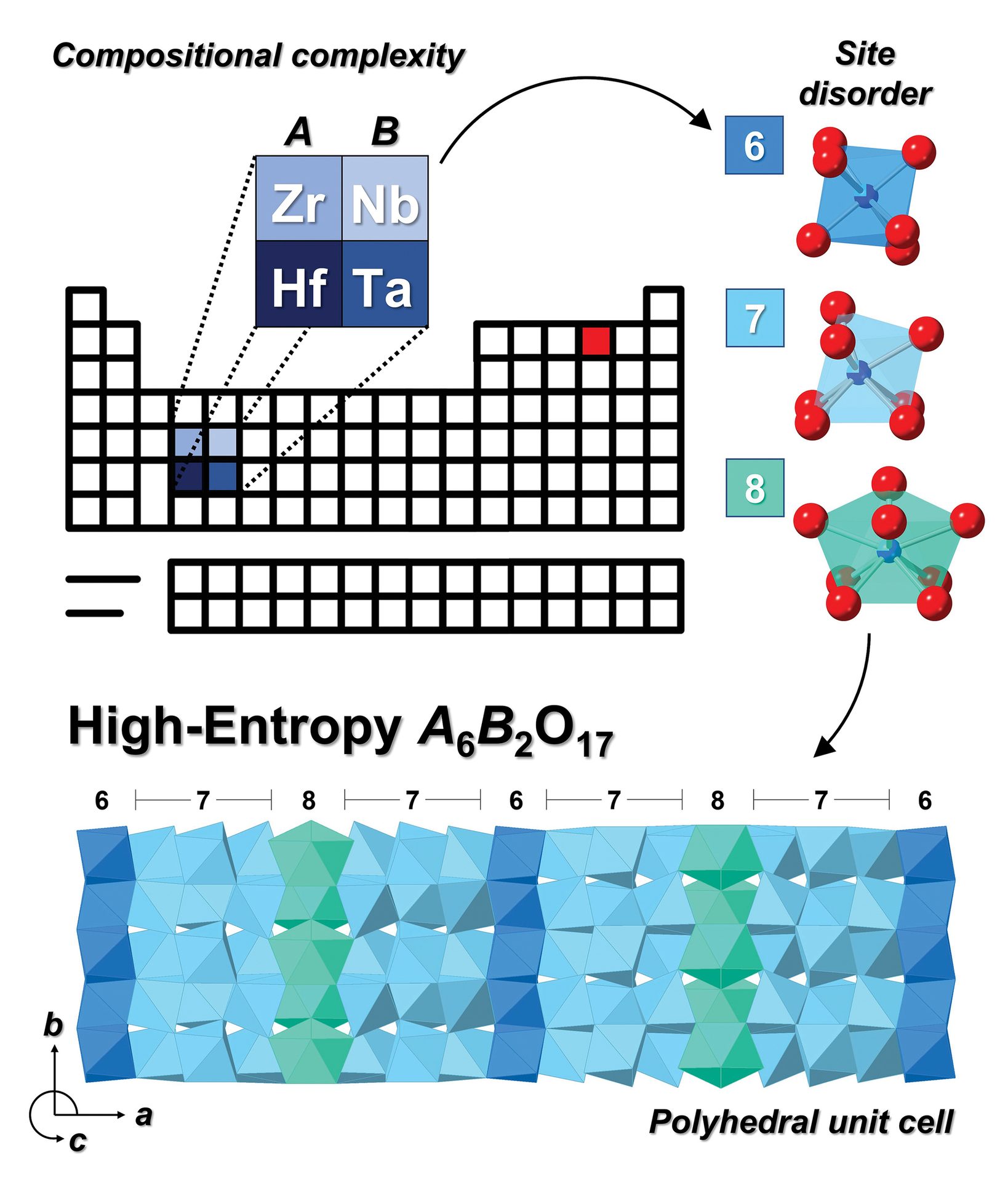deciphering the discipline
A regular column offering the student perspective of the next generation of ceramic and glass scientists, organized by the ACerS President’s Council of Student Advisors.

Jackson Spurling
Guest columnist
Entropy-inspired materials design for next-generation electroceramics
Our increasingly digital world requires the development of new electronic devices that process data faster, resist overheating, and are economical to manufacture. To that end, materials scientists must develop higher performance dielectric and ferroelectric materials, which serve as the backbone of data processing and memory storage components within electronic systems.
High-entropy materials have enabled access to a broader compositional selection space and improved functionalities for electroceramics.1 “Entropy” refers to the number of configurations in which different chemical species may be arranged within a material’s structure. High-entropy materials possess numerous potential configurations within a single-phase structure. The configurational complexity promotes extended solid solubility and phase stability, while the diverse chemistry gives rise to unique and tunable properties.
As a member of the Maria Group at Penn State, I use an entropy-inspired design approach to develop novel oxide electroceramics. Specifically, I study the interplay between configurational entropy and electrical properties in the A6B2O17 (A = Zr, Hf; B = Nb, Ta) disordered oxide family across length scales, from bulk ceramics to thin films.
These oxides, modeled in Figure 1, present a unique opportunity for entropy engineering. They host multiple constituent cations on a complex sublattice with three types of sites (6-, 7-, and 8-fold oxygen coordinations), which allows for many possible structural and chemical configurations. Moreover, 7-fold coordination sites are closely associated with ferroelectric behavior in HfO2, a structural relative to A6B2O17.2 Despite this potential, the electronic properties of A6B2O17 phases have hitherto remained unstudied.
To elucidate the structure–property relationships in A6B2O17 phases, we first improved our understanding of the material’s structure by assessing the degree of disorder on the cation sublattice. We did so by leveraging in situ and ex situ X-ray diffraction to study the A6B2O17 phase formation behavior in bulk ceramics at high temperatures (up to 1,300°C), as minimum stabilization temperatures are dependent on the degree of cation disorder.3
Our observations support the cation-disordered model of the A6B2O17 phases and demonstrate extended solid solubility consistent with high-entropy effects,4 making this system interesting for further exploring the interplay between entropy and properties.
Turning to electronic properties, we measured high dielectric permittivities converging to approximately 60 while retaining low loss values in the 10–3 range in the bulk regime for ternary A6B2O17 phases. Similar values were obtained for thin films produced via sputter deposition from dense bulk ceramic targets.
These measurements, which will be published soon within a journal article, suggest contributions to polarizability arising from long-range interactions and hint at potential ferroelectric responses. We are now exploring the structure and property effects derived from additional cation species.
Our results confirm the potential of A6B2O17 disordered oxides as promising electroceramics. More broadly, they illustrate the viability of using entropy-inspired design to develop new functional materials for electroceramic and other applications.
About the author:
Jackson Spurling is a Ph.D. candidate in the Department of Materials Science and Engineering at The Pennsylvania State University, working in Jon-Paul Maria’s group. His research focuses on high-entropy and disordered oxides for electroceramic applications. Outside of the lab, Jackson is an avid fan of Penn State Nittany Lions Football and enjoys hiking in the Appalachian Mountains of Central Pennsylvania.

Figure 1. The compositional complexity, structure, and site disorder of A6B2O17 disordered oxides make these materials attractive as potential high-entropy electroceramics. Adapted from Reference 4.
Credit: Spurling et al., J. Mater. Sci.

Figure 1. The compositional complexity, structure, and site disorder of A6B2O17 disordered oxides make these materials attractive as potential high-entropy electroceramics. Adapted from Reference 4.
Credit: Spurling et al., J. Mater. Sci.
Pxx.
Credit: xx
About the author:
Niusha Heshmati is a third-year Ph.D. candidate in materials and nanochemistry at the University of Cologne, Germany. Her research revolves around the synthesis, characterization, and performance enhancement of lead halide perovskite materials for solar cell applications. She has a profound appreciation for various forms of art, and she plays the violin as a hobby.
